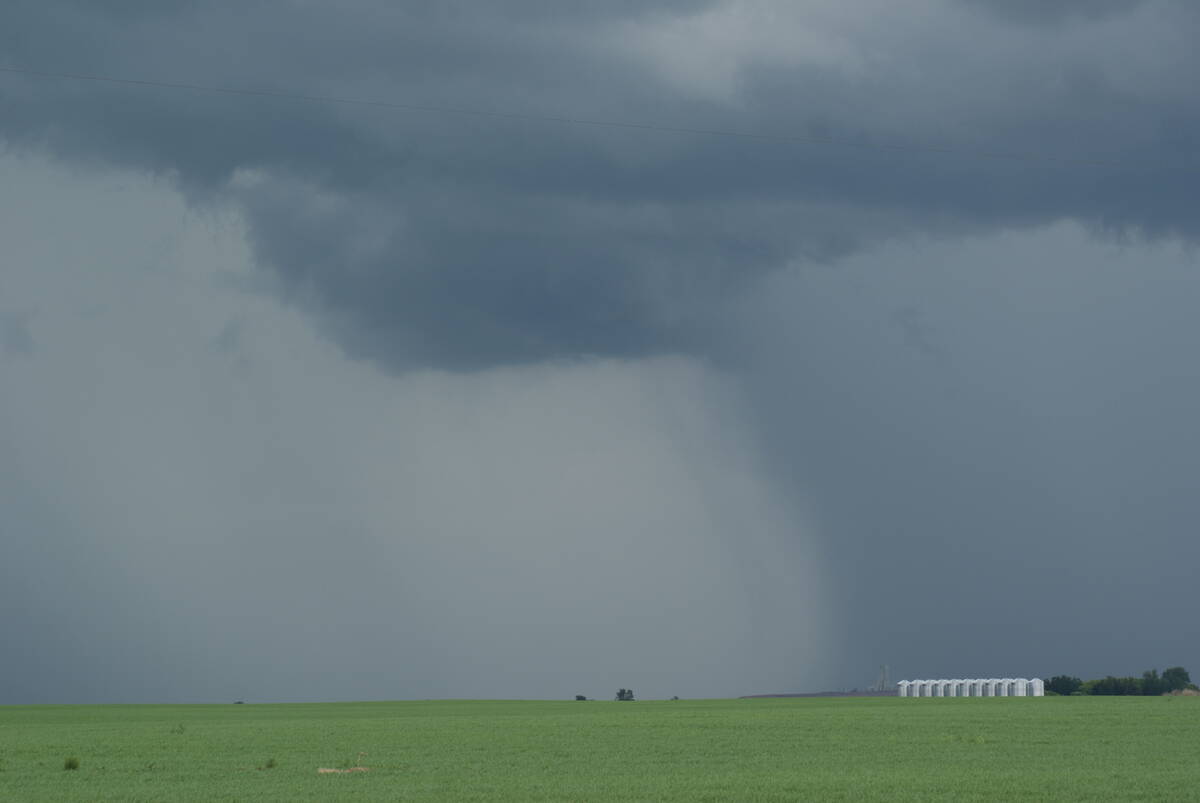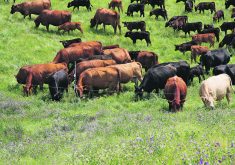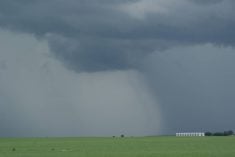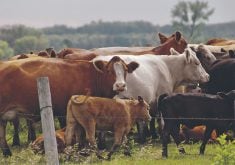Reliable science?
Re: “Government pesticide review praised” (WP, March 20.) Government assessments of pesticides are attempts to predict how they will interact with the environment. They try to determine their safety with science for both the environment and the consumers of the crops and animals that those products are used on.
Terms like risk assessment, testing its assumptions, quality of data, clear direction, realistic objectives and strong direction at senior levels lead one to suspect that it is not science at all but a different Ouija board with an assortment of hands on the board pushing it in various directions.
Read Also

Canadian farmers need new tools to support on-farm innovation
Farmers need a risk management buffer that actually works and investment that drives advancements forward if Canada is to build resilience.
I am sure that they are well-meaning people (who) are doing their best trying to predict outcomes of various situations.
Ronald Doering, a former Canadian Food Inspection Agency president, writes in Food in Canada (Jan. Feb. 2008) about Health Canada’s attempts to set a regulatory framework for product specific health claims: “Well here we go again. If Legislative Renewal, Smart Regulation, Blueprint for Renewal, Blueprint for Renewal II, Towards a Regulatory Modernization Strategy for Food and Nutrition weren’t enough, we now have Managing Health Claims for Foods in Canada; Towards a Modernized Framework. This one’s another door stopper, weighing in at 134 pages.
“Health Canada likes the word ‘towards’ and ‘modernize’. But will anything happen? The food industry is deeply skeptical. … There will be no approvals for any new health claims for any food or food-like products any time soon. Get used to it.”
Health Canada makes another attempt to set the standards for the ability to predict the future.
This science is in its infancy. Farmers touch the world every day. The instincts that they develop about the world are frequently more accurate than the science of governments.
– Clark Lysne,
Wetaskiwin, Alta.
Barley premiums
Kyle Korneychuk presents some misguided ideas about the Canadian Wheat Board in his letter to the editor March 13. He suggests that “one seller can command a higher price than multiple sellers.”
In theory, perhaps. In the reality of the current CWB, absolutely not.
Mr. Korneychuk and the other CWB directors have a responsibility to look at all the facts, not just the flawed economic analyses that they pay for.
And the facts speak loud and clear. The CWB does not get premiums in barley.
Richard Gray of the University of Saskatchewan is one of the authors of a study commissioned by the CWB that concluded the CWB gets $59 million a year more than an open market system would.
He admitted to me in a conversation that the CWB does not get premiums in feed barley. His view is that the CWB earns premiums only in malting barley, described as a premium over feed prices.
On a typical two million tonne malt barley pool, $59 million works out to about $29.50 per tonne, or 64 cents a bushel.
Over the last eight years, the average malt premium over feed in Montana was $1.23 a bu., almost double the premium Gray suggests the CWB gets.
But there’s more. The average malt premium in Canada is closer to 46 cents a bu., lower than what Gray gives the CWB credit for.
So Mr. Korneychuk, where is the CWB-induced premium? Using your conclusions, if it weren’t for the CWB, malt barley in Canada would be at a discount to feed barley. How absurd is that?
The reality is it appears western Canadian barley farmers would be better off without the CWB.
Clearly Montana farmers are….
– John De Pape,
Winnipeg, Man.
Legal robbery
According to Agriculture and Agri-Food Canada, over the past two decades farm families have produced and sold more than two-thirds of a trillion dollars worth of farm goods. Meanwhile the markets have rewarded them with not one penny of net income.
One hundred percent of farmers’ net income has come from a combination of taxpayers’ support programs, off-farm work and borrowed money.
But if farmers didn’t keep a penny, where did it go? It went to input supply corporations. Over the past 20 plus years, machine, fuel, fertilizer, chemical, seed and railroad companies and their like sucked up 100 percent of the $689 billion originally paid to farm families over a period of 20 years.
Over the same 20 plus year period, taxpayers contributed $68 billion (adjusted for inflation) in order to keep farmers on the land – about $9,000 per Canadian family. This … appears to be more a subsidy to the large transnational corporations than a subsidy to farmers. …
This probably represents what could be termed as the biggest legal robbery ever perpetrated on a class of people on this earth.
Farmers deserve and are entitled to economic justice at the marketplace, no matter how difficult. A solution must be found.
There is very little indication that the present federal government will ever address this very grave problem. In fact, they won’t even acknowledge or admit the cause of the problem.
The only solution they have to offer is to destroy the farmer-elected and operated Canadian Wheat Board.
– George E. Hickie,
Waldron, Sask.
Urea research
Re: “Trials show super urea delivers little benefit,” WP, Feb. 7.
I believe the title of your article is misleading to your readers. I am concerned that your reporting on such a limited amount of research (one year, six locations, and one type of application) may lead your readers to wrong conclusions.
While you may consider the statement you included near the end of the story: “Flaten said this was just one study and not the final word on what super urea may mean to farmers” as an adequate disclaimer, it certainly could not counterbalance the comments made earlier in the article, or the article title.
There are many applications where super urea provides economic and environmental benefits. The amount of research evaluating super urea in Western Canada is limited and evaluation under conditions conducive to ammonia volatilization and nitrous oxide emissions is even more scarce.
The role your publication plays in sharing information is a vital one. Please work with the research community to insure growers receive the most objective review of research done, and be cautious about moving to conclusions when the questions are far from answered.
– Tom Jensen,
Saskatoon, Sask.
Horse plant
I am the inspector with the Canadian Horse Defense Coalition who conducted the investigation at Natural Valley Farms on Feb. 26, 2008 (Horse plant denies mistreatment, WP, March 13.)
The evidence collected in the NVF investigation raises very serious issues that the Canadian Horse Defense Coalition and concerned Canadians believe must be addressed by management of the plant and the Canadian Food Inspection Agency….
Unfortunately, negotiations with management at the plant have failed and officials at the CFIA were unable to provide reasonable explanations for our concerns. This investigation began in September 2007….
When we returned to Natural Valley Farms last month we were further concerned to see that conditions had not improved, but in fact, had deteriorated. …
Regarding the foal in the rendering pit, the presence of a foal is very concerning as it is likely that a pregnant mare was loaded and transported to slaughter too close to term. There were no flies around the body of the deceased foal, as your article states. …
The full, unedited footage taken walking towards the rendering pit, showing the Natural Valley Farms slaughter plant in the background, and at the pit, will soon be available as streaming video on the Canadian Horse Defense Coalition’s website. This will quell denials, such as those by Bill desBarres, spokesperson for the Alberta Equine Welfare Group, … who stated the footage was “erroneous” and “exaggerated” when he had not yet viewed it.
We continue to have a number of serious welfare concerns regarding practices at Natural Valley Farms. …
– Twyla Francois
Canadian Horse Defense Coalition,
Winnipeg, Man.














